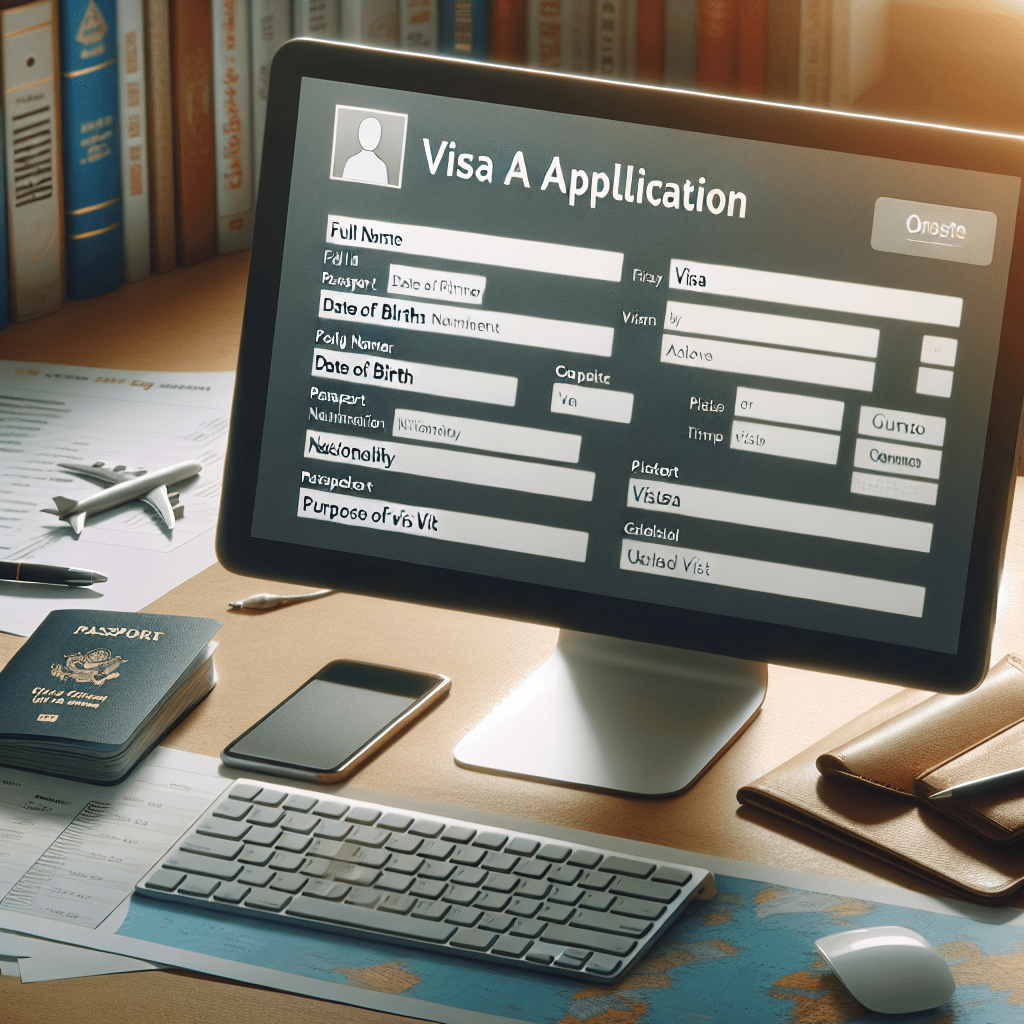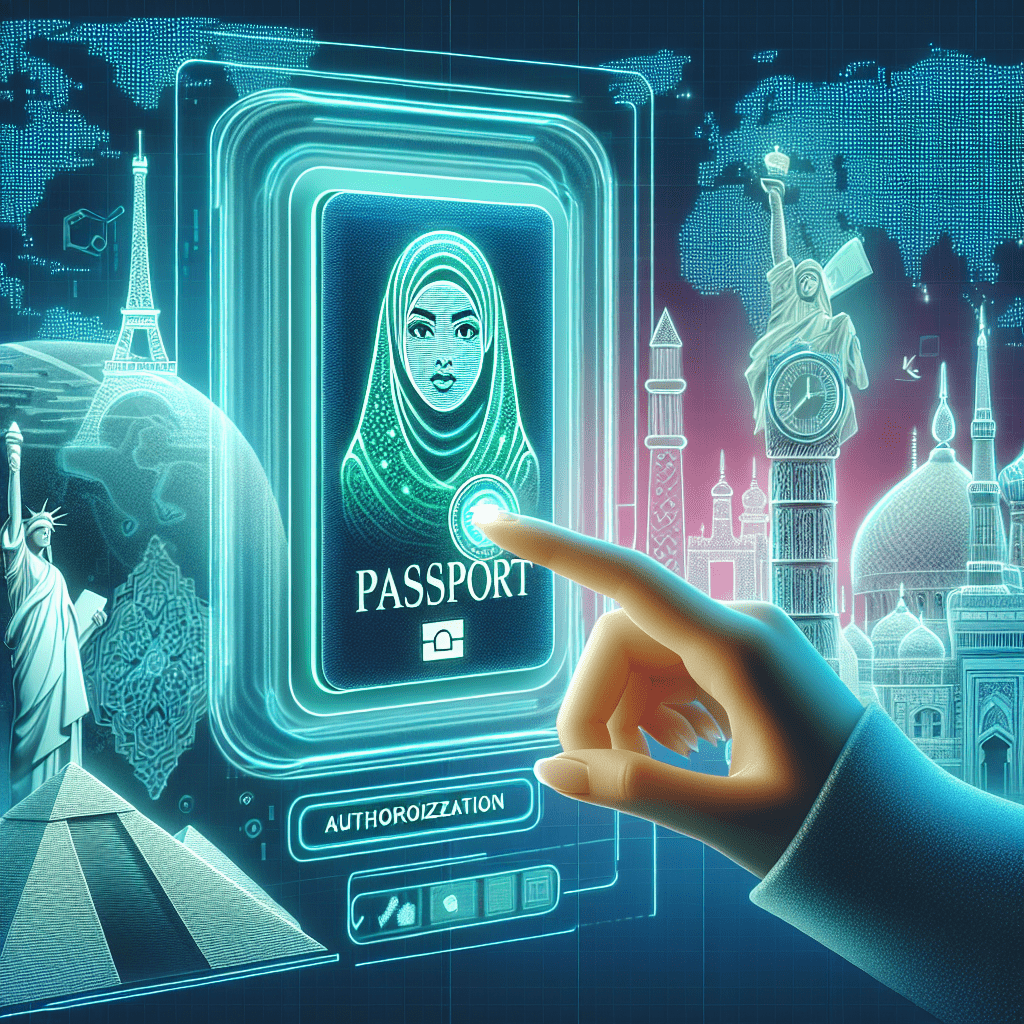**How to Extend Your Stay with an Electronic Visa**

Understanding how to extend your stay with an e-Visa is crucial for travelers who find themselves needing more time in a foreign country. Whether it’s for business, leisure, or unforeseen circumstances, knowing the ins and outs of the e-Visa extension process can save you from potential legal issues and ensure a smooth continuation of your journey. Many travelers encounter situations where an extended stay becomes necessary. Perhaps a business meeting runs longer than expected, or you discover more attractions and experiences that you want to explore. In some cases, personal emergencies or health issues may also require you to stay beyond your original plan. Whatever the reason, being prepared and informed about the e-Visa extension process can make a significant difference. The process of extending an e-Visa is generally straightforward but varies depending on the country you are visiting. It typically involves submitting an online application, providing necessary documentation, and sometimes paying an additional fee. By understanding these steps and preparing in advance, you can ensure that your travel plans remain flexible and stress-free. For more information on electronic visas, you can visit our [electronic visa](https://simplevisa.com) page.

Prerequisites for Extending Your e-Visa
Eligibility Criteria
Before you can extend your e-Visa, it’s essential to understand the eligibility criteria. The first requirement is the validity of the original e-Visa. Your current e-Visa must be valid at the time of your extension application. If your e-Visa has already expired, you may face legal complications and could be required to leave the country immediately. Therefore, it’s crucial to keep track of your e-Visa’s expiration date and plan your extension accordingly. The purpose of the extended stay is another critical factor. Different countries have varying rules regarding the reasons for which an e-Visa can be extended. Common acceptable reasons include business meetings, tourism, medical emergencies, or family visits. Ensure that your reason for extending your stay aligns with the permissible categories outlined by the host country. Providing a clear and valid reason will increase the likelihood of your extension application being approved.
Required Documentation
To successfully extend your e-Visa, you will need to submit an extension application form. This form is usually available on the official immigration website of the country you are visiting. Make sure to fill out the form accurately and completely, as any errors or omissions could delay the processing of your application. Supporting documents are also necessary to substantiate your extension request. These may include a copy of your original e-Visa, a valid passport, proof of financial stability, and any other documents that justify the need for an extended stay. For instance, if you are extending your stay for medical reasons, you may need to provide a letter from a healthcare provider. If it’s for business, a letter from your employer or business partner may be required. Having all the necessary documents ready will streamline the e-visa processing and increase your chances of approval.
Timing Considerations
Timing is a crucial aspect when it comes to extending your e-Visa. It’s advisable to submit your extension application well before your current e-Visa expires. Most countries recommend applying at least 30 days before the expiration date. This allows ample time for the authorities to review your application and for you to provide any additional information if required. Processing times and deadlines vary from country to country. Some countries may process e-Visa extensions within a few days, while others may take several weeks. Be sure to check the specific processing times for the country you are visiting and plan accordingly. Missing the deadline for submission can result in your application being denied, forcing you to leave the country or face legal penalties. By understanding the eligibility criteria, gathering the required documentation, and considering the timing of your application, you can navigate the e-Visa extension process with confidence. This preparation ensures that your travel plans remain flexible and that you can enjoy your extended stay without any legal complications.

Applying for an e-Visa Extension
Step-by-Step Application Process
The process of applying for an e-Visa extension typically begins with accessing the online submission portal of the host country’s immigration website. This portal is designed to facilitate the digital travel authorization process, making it easier for travelers to manage their visa needs. Start by logging into the portal using your existing credentials or by creating a new account if required. Once logged in, you will need to fill out the extension application form. This form will ask for various details, including your personal information, the reason for your extended stay, and your current e-Visa details. Ensure that all information is accurate and complete to avoid any delays in the e-visa processing. After completing the form, the next step is the payment of extension fees. The fee amount varies depending on the country and the type of e-Visa you hold. Most online visa application portals accept multiple payment methods, including credit cards and online banking. Make sure to keep a copy of the payment receipt as proof of transaction, as you may need to present it later.
Common Challenges and How to Navigate Them
One of the most common challenges faced during the e-Visa extension process is incomplete documentation. Missing or incorrect documents can lead to delays or even rejection of your application. To avoid this, double-check the list of required documents provided by the immigration authorities. Ensure that you have all the necessary paperwork, such as your original e-Visa, passport, and any supporting documents that justify your extended stay. Delays in processing are another frequent issue. While some countries offer quick turnaround times, others may take several weeks to process an extension request. To mitigate this, submit your application well in advance of your current e-Visa’s expiration date. Additionally, regularly check the status of your application through the online portal to stay informed about any updates or additional requirements.
Country-Specific Requirements
It’s important to note that e-Visa extension rules and requirements can vary significantly from one country to another. Some countries may have more lenient policies, while others may impose stricter regulations. For instance, certain countries may allow multiple extensions, while others may limit the number of times you can extend your stay. Familiarize yourself with the specific regulations of the country you are visiting. This includes understanding any additional documentation that may be required, such as a digital visa request form or an electronic travel document. Some countries may also have specific rules regarding the purpose of your extended stay, so ensure that your reason aligns with their guidelines. By following the step-by-step application process, being aware of common challenges, and understanding country-specific requirements, you can navigate the e-Visa extension process with ease. This preparation will help you avoid potential pitfalls and ensure a smooth and successful extension of your stay.

Post-Application Process
Monitoring the Status of Your Application
Once you have submitted your e-Visa extension application, the next step is to monitor its status. Most countries provide an online tracking system that allows you to check the progress of your application in real-time. This system is usually accessible through the same portal where you submitted your online visa application. By regularly checking the status, you can stay informed about any updates or additional requirements that may arise during the e-visa processing. If you encounter any issues or delays, contacting support for updates can be beneficial. Many immigration websites offer customer support services, including email and phone support. When reaching out, be sure to have your application reference number and other relevant details on hand to expedite the process. Effective communication with the support team can help resolve any issues quickly and keep your application on track.
Actions Upon Approval
Upon receiving approval for your e-Visa extension, you will typically receive a notification via email or through the online portal. This notification will include your extended e-Visa, which you should download and print. Having a physical copy of your electronic travel permit can be useful for any future travel or immigration checks. Ensuring compliance with the new visa terms is crucial. Your extended e-Visa will come with specific conditions, such as the new expiration date and any additional requirements you must meet during your extended stay. Familiarize yourself with these terms to avoid any legal complications. For instance, if your extended stay is for business purposes, ensure that you adhere to any business-related regulations set by the host country.
Dealing with Rejection
In some cases, your e-Visa extension application may be denied. Understanding the reasons for denial is the first step in addressing this issue. Common reasons for rejection include incomplete documentation, failure to meet eligibility criteria, or discrepancies in the information provided. The rejection notice will usually outline the specific reasons, allowing you to take corrective action. Exploring alternative options is essential if your extension application is denied. One option is to reapply, ensuring that you address the issues that led to the initial rejection. Another option is to apply for a different type of visa that may better suit your needs. For example, if your online travel visa extension is denied, you might consider applying for a long-term visa through a virtual visa application process. Consulting with an immigration expert can also provide valuable insights and help you navigate alternative pathways. By effectively monitoring your application status, taking appropriate actions upon approval, and knowing how to deal with rejection, you can manage the post-application process with confidence. This comprehensive approach ensures that you remain compliant with immigration laws and can enjoy your extended stay without any disruptions.

Conclusion
Recapping the key points about extending an e-Visa, it’s clear that understanding the prerequisites, application process, and post-application steps are essential for a successful extension. First, eligibility criteria such as the validity of your original e-Visa and the purpose of your extended stay must be met. Ensuring you have all required documentation, including the extension application form and supporting documents, is crucial. Timing considerations, such as submitting your application well before your current e-Visa expires, can help avoid unnecessary delays. The application process itself involves accessing the online submission portal, accurately filling out the extension form, and paying the necessary fees. Common challenges like incomplete documentation and processing delays can be navigated by double-checking your paperwork and staying informed about your application’s status. Country-specific requirements also play a significant role, as different nations have varying rules and regulations for e-Visa extensions. Once your application is submitted, monitoring its status through online tracking systems and contacting support if needed can keep you updated. Upon approval, receiving your extended e-Visa and ensuring compliance with the new terms are vital steps. In case of rejection, understanding the reasons and exploring alternative options can help you find a viable solution. Planning and preparing for a successful stay extension is not just about following procedures but also about being proactive and informed. Start by researching the specific requirements of the country you are visiting and gather all necessary documents well in advance. Utilize online resources and support services to guide you through the process. By staying organized and attentive to details, you can significantly increase your chances of a smooth and successful e-Visa extension. Encouragement to plan and prepare cannot be overstated. The more you know about the e-Visa system and the specific requirements of your host country, the better equipped you will be to handle any challenges that arise. Whether it’s through an online visa application or a digital travel authorization, being prepared ensures that your travel plans remain flexible and stress-free. By taking these steps, you can enjoy your extended stay with peace of mind, knowing that you have met all legal requirements and are fully compliant with immigration laws.